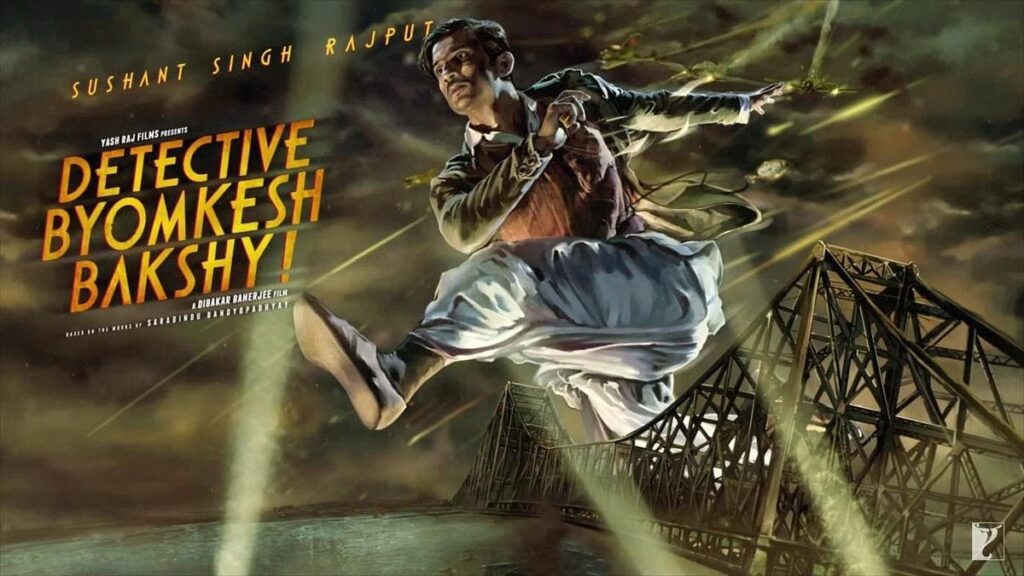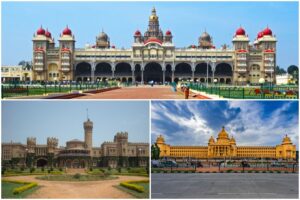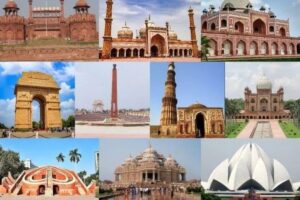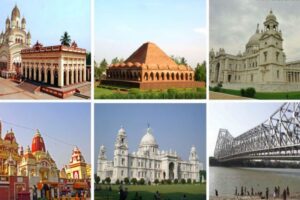The audio-visual experience of watching a movie can soothe our sensibilities and lead us to another world. Here is a collection of ten Bollywood films with stunning cinematography that will leave you speechless!
- Bulbul (2020) – “Bulbul” is an Indian supernatural horror features stunning visuals that capture the mood and atmosphere of the film. The cinematographer, Siddharth Diwan, uses a muted color palette and natural lighting to create an eerie and haunting atmosphere. The film is shot predominantly in the forests of Bengal, and the lush greenery and misty surroundings add to the overall spooky ambiance. The camera work is also notable for its use of long takes and slow movements, which add to the tension and suspense of the film.

- Barfi (2012) – “Barfi!” is a beautifully shot film that captures the essence of Kolkata and the characters’ emotions. The film is set in the 1970s and 1980s, and the cinematographer, Ravi Varman, uses a warm and nostalgic color palette to create a sense of nostalgia and romance. The camera work is notable for its handheld shots, which add to the film’s naturalistic and realistic feel. The film also features several visually stunning sequences, including a chase scene through the streets of Kolkata and a dream sequence shot entirely in black and white.

- Tumbadd (2018) – “Tumbbad” is a visually stunning film that uses light and shadows to create a haunting and atmospheric setting. The cinematographer, Pankaj Kumar, uses a dark color palette and natural lighting to create a sense of foreboding and dread. The film is shot primarily in the village of Tumbbad, and the location provides a perfect backdrop for the eerie and mysterious story. The camera work is notable for its close-ups and extreme close-ups, which add to the film’s claustrophobic and intense atmosphere. The film also features some stunning visual effects that are seamlessly integrated with the live-action footage, creating a truly immersive experience.

- Detective Byomkesh Bakshy! (2015) – “Detective Byomkesh Bakshy!” (2015) is known for its cinematography because it features a unique visual style that blends elements of film noir with Indian cinema aesthetics. The film’s cinematographer, Nikos Andritsakis, created a moody and atmospheric look that complements the film’s neo-noir genre. The film uses a combination of low-key lighting, unusual camera angles, and long takes to create tension and a sense of unease. Furthermore, the film’s setting in 1940s Calcutta is brought to life through the cinematography, which captures the city’s unique architecture, crowded streets, and vibrant culture. The attention to detail in the cinematography contributes to the film’s overall sense of realism and authenticity.

- Padmaavat (2018) – The cinematography of “Padmaavat” is one of its most striking aspects. The film’s cinematographer, Sudeep Chatterjee, used a variety of techniques to create a visually stunning and immersive experience for the audience. One of the key elements of the film’s cinematography is its use of color. The film features a vibrant color palette, with deep reds, golds, and blues creating a sense of opulence and luxury. The use of color is also used to differentiate between different characters and their allegiances, with the Rajputs often associated with warm colors and the Mughals with cooler ones. Finally, the film’s cinematography makes extensive use of visual effects, particularly in the battle scenes. The use of slow motion and digital enhancements creates a sense of heightened drama and intensity, while also highlighting the physical prowess of the characters.

- Ramleela (2013) – “Ramleela” is an Indian Hindi-language tragic romance film directed and produced by Sanjay Leela Bhansali. The film is visually stunning and features exceptional cinematography by S. Ravi Varman. The film’s cinematography is characterized by its use of vibrant colors, intricate set designs, and dramatic camera angles. The use of wide shots to capture the expansive landscapes and elaborate sets enhances the film’s grandeur and epic feel. The film’s lighting is also noteworthy, with the use of soft lighting in romantic scenes and harsh lighting in intense action sequences. The camera movements and angles add to the film’s dramatic impact, with sweeping crane shots and dynamic tracking shots used to create a sense of movement and momentum.

- Zindagi Na Milegi Dobara (2011) – “Zindagi Na Milegi Dobara” is an Indian coming-of-age film directed by Zoya Akhtar, and the cinematography was done by Carlos Catalan. The film is set in various picturesque locations across Spain, and the cinematography captures the beauty of these locations with stunning visuals. The use of wide shots and aerial shots shows the vastness of the landscape, while close-ups and medium shots capture the details of the characters and their emotions. The color palette used in the film is warm and vibrant, giving the film a lively and energetic feel. The film also uses slow-motion shots to capture the excitement of certain moments, such as the bull-running sequence.

- Tamasha (2015) – “Tamasha” is a romantic drama film directed by Imtiaz Ali, and the cinematography was done by Ravi Varman. The film’s cinematography is characterized by its use of color and light to create a dreamy and surreal atmosphere. The use of vibrant colors and dynamic lighting helps to convey the emotional state of the characters and their inner turmoil. The film is shot in a variety of locations, ranging from the bustling city of Delhi to the serene beauty of Corsica. The cinematography captures the essence of each location with its use of framing and composition, creating a sense of place and atmosphere. The camera movements in the film are fluid and dynamic, creating a sense of energy and movement. The use of handheld shots adds to the naturalistic feel of the film, creating a sense of intimacy with the characters. The film also uses visual effects to create surreal and fantastical sequences, such as the scene where the lead characters meet in a dreamlike world.

- Devdas(2002) – “Devdas” directed by Sanjay Leela Bhansali and cinematography by Binod Pradhan, is known for its visually stunning and grandiose cinematography. The film is set in the early 1900s in India and is shot in a range of locations, from the palaces of the aristocracy to the bustling streets of Calcutta. The cinematography captures the grandeur and scale of these locations with sweeping camera movements, wide shots, and majestic angles. The use of color in the film is particularly noteworthy, with rich, vibrant hues of red, gold, and green dominating the visual palette. The use of color grading and lighting adds to the film’s dreamlike quality, creating a sense of opulence and romance. The film’s use of sets and production design is also impressive, with elaborate sets and costumes that transport the audience to a different time and place.

- Bajirao Mastani (2015) – “Bajirao Mastani” directed by Sanjay Leela Bhansali, features cinematography by Sudeep Chatterjee. The film’s cinematography is characterized by its grandeur, lavish sets, and exquisite use of color and lighting to create a visually stunning experience. The cinematography captures the scale and splendor of the era with sweeping shots of majestic palaces and fortresses. The use of natural light and shadows adds to the film’s authenticity, creating a sense of realism in the historical setting. The camera movements in the film are fluid and dynamic, creating a sense of movement and energy that mirrors the emotional intensity of the story. The use of close-ups and slow-motion shots adds to the film’s dramatic impact, creating a sense of heightened emotion and tension.












